- 1. Wat Phra Kaew - Temple of the Emerald Buddha
- 2. Wat Pho - Temple of the Reclining Buddha
- 3. Wat Arun - Temple of Dawn
- 4. Wat Traimit - Temple of the Golden Buddha
- 5. Wat Saket - The Golden Mount
- 6. Wat Ratchanatdaram and Loha Prasat
- 7. Wat Benchamabhopit - The Marble Temple
- 8. Wat Suthat
- 9. Wat Mangkon Kamalawat - The Dragon Lotus Temple
- 10. Wat Mahatat
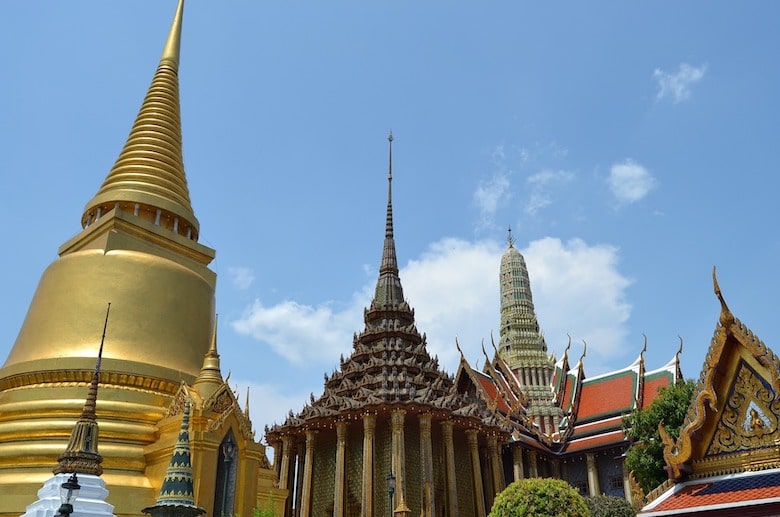
Located on the grounds of the Grand Palace, this lavishly-decorated temple from 1783 is home to the Emerald Buddha, one of the country’s most sacred images, which visitors aren’t even allowed to photograph. The relatively small image (it’s just 60cm, or 2ft, tall), carved out of a single jade, was first discovered in 1464 and had several homes in Thailand and Laos before being placed in its current spot in the late 1700s. Gilded pagodas and ornate pavilions make up the rest of compound, which is also known for 178 panels covering the cloisters, depicting the complete story of the Ramakien, Thailand’s national epic.
See the Wat Phra Kaew Visitor's Guide.
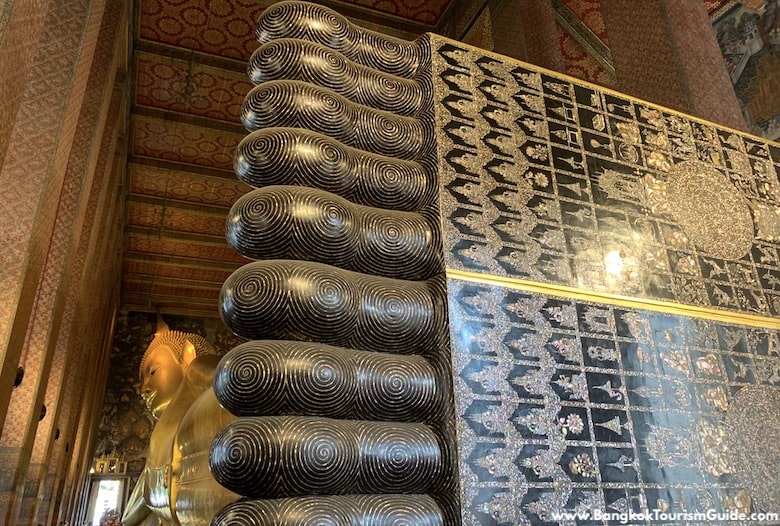
Bangkok’s largest and oldest temple was built in 1788 over another that stood on the site since the 1500s. It’s one of the city’s most popular attractions, thanks to its famous, awe-inspiring Reclining Buddha, a 46m- (150ft-) long image that fills an entire building. A visit here often ends with a traditional Thai massage at the city’s most respected massage school.
See the Wat Pho Visitor's Guide.
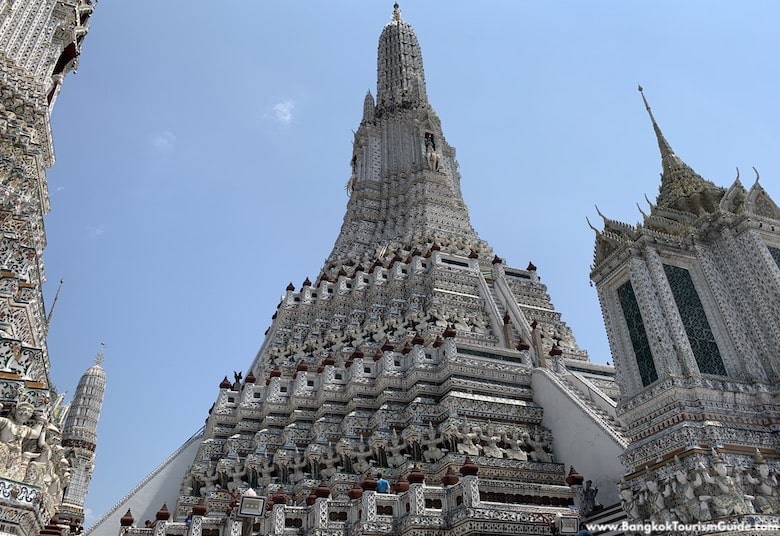
Although it’s known as the “Temple of Dawn,” this temple is mostly visited at sunset, as that’s when it’s at its most beautiful. It’s one of Thailand’s most iconic monuments, and its architectural style is actually unique in the country. Ornamented with broken pieces of colorful porcelain, it invites visitors to climb its central prang (tower), through steep steps representing the difficulty of reaching higher levels of existence.
See the Wat Arun Visitor's Guide.
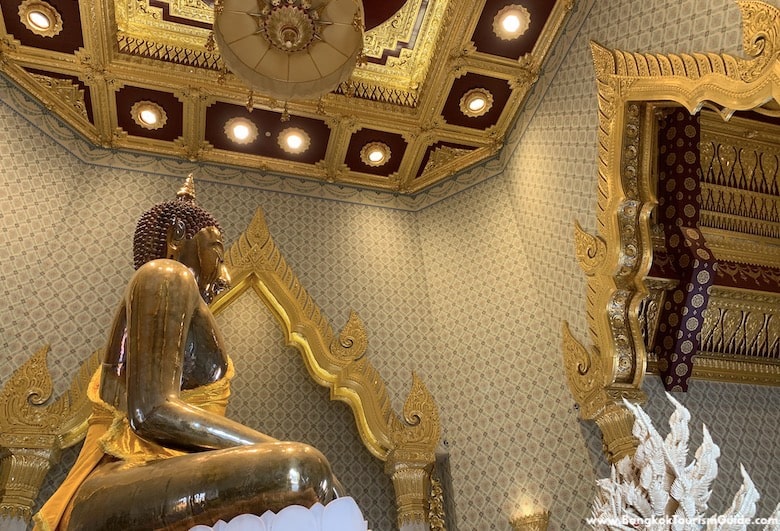
The world’s largest golden Buddha statue (made from tons of solid gold) can be seen in this ornate temple. Said to be worth US$250 million, the image dates back to the 13th century, and was once covered in plaster, to fool Burmese invaders. The temple is one of the tallest structures in Chinatown, offering a panoramic view of the city.
See the Wat Traimit Visitor's Guide.
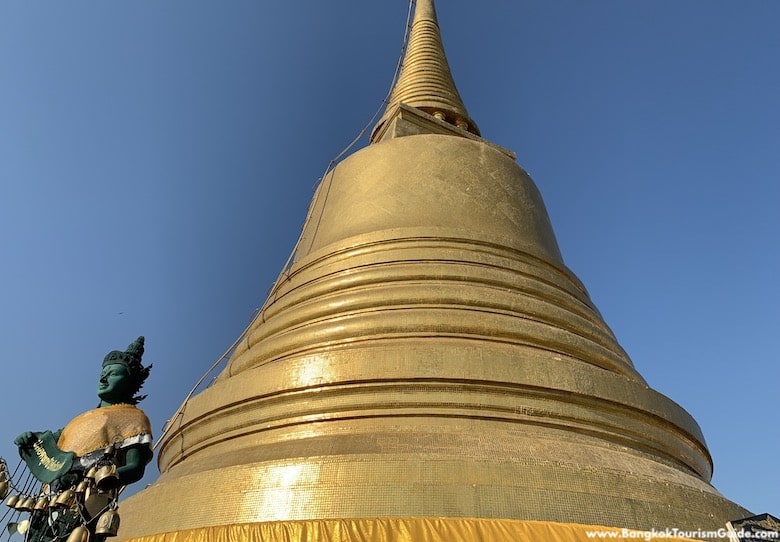
This distinctive golden temple from the late 18th century, tops an artificial hill, offering some of the best views over Bangkok. Site of one of the city’s main annual fairs (in November), it houses another revered image of the Buddha, reached via a circular staircase lined with small monuments. If you visit in November, you may catch an annual candle procession at the foot of the temple.
See the Wat Saket Visitor's Guide.
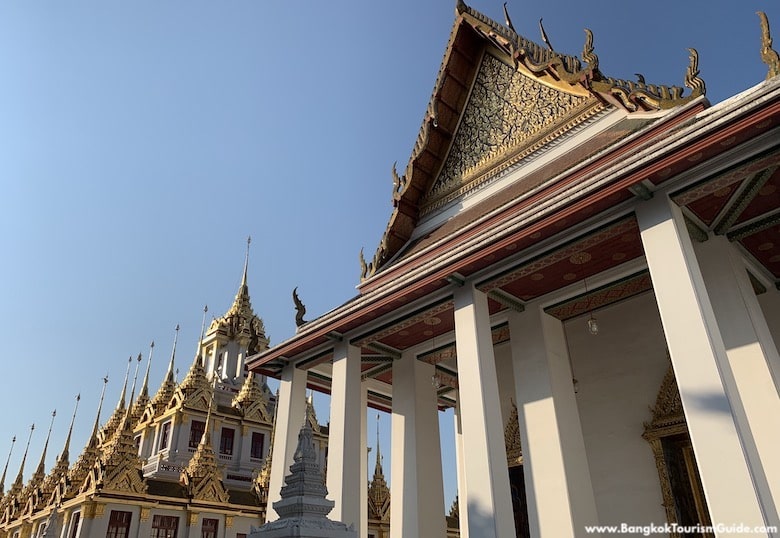
The “Temple of the Royal Niece” dates from 1846 and includes a metal monastery whose architecture is unique in the world. Modelled after an ancient Sri Lankan temple, it stands out for its towers with 37 golden spires. It’s a peaceful place for meditation, and includes an amulet market.
See the Wat Ratchanatdaram Visitor's Guide.
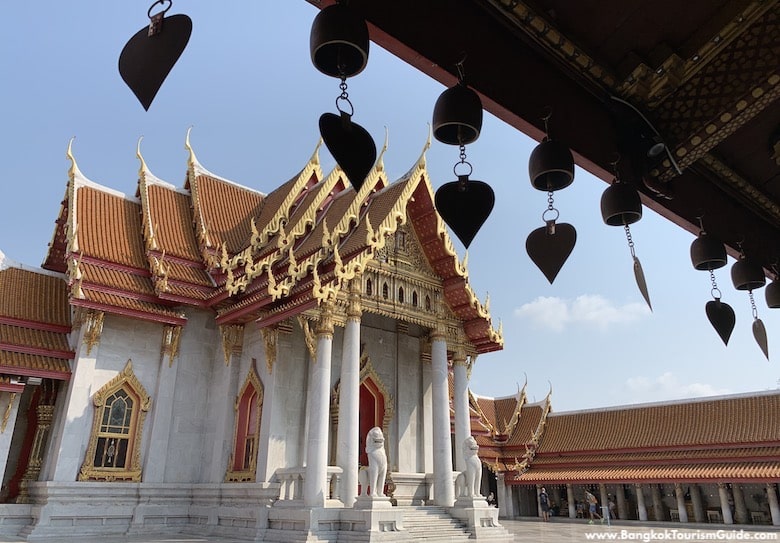
Known as the “Marble Temple” for its use of the material imported from Carrara, Italy, this temple is considered a Thai architectural masterpiece. Built in 1900, it’s the most recent of the city’s major temples, and doesn’t have a large or revered image of the Buddha. It does, however, hold the ashes of King Rama V, and features an elegant cloister with dozens of Buddha images amassed by the king himself.
See the Wat Benchamabhopit Visitor's Guide.
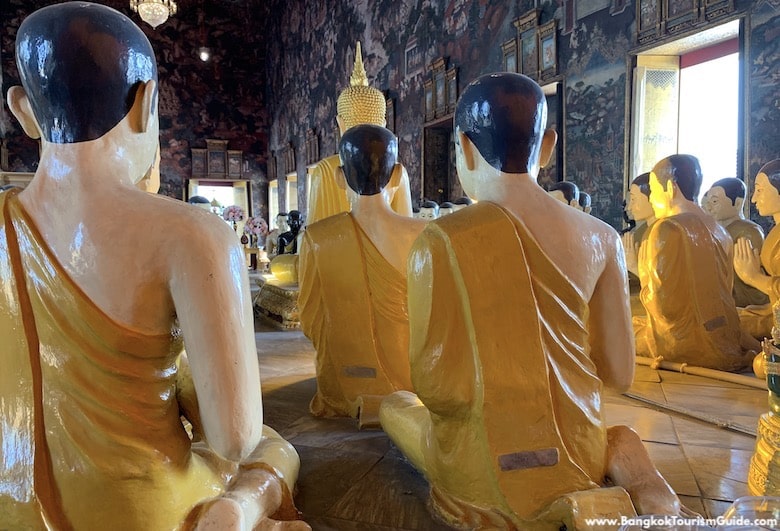
Because it attracts fewer visitors, this is one of the most peaceful temples. Dating from 1807, it’s found next to the Giant Swing, a landmark built in 1784 for religious ceremonies. Its central image of the Buddha is said to be the largest surviving Sukhothai bronze image.
See the Wat Suthat Visitor's Guide.
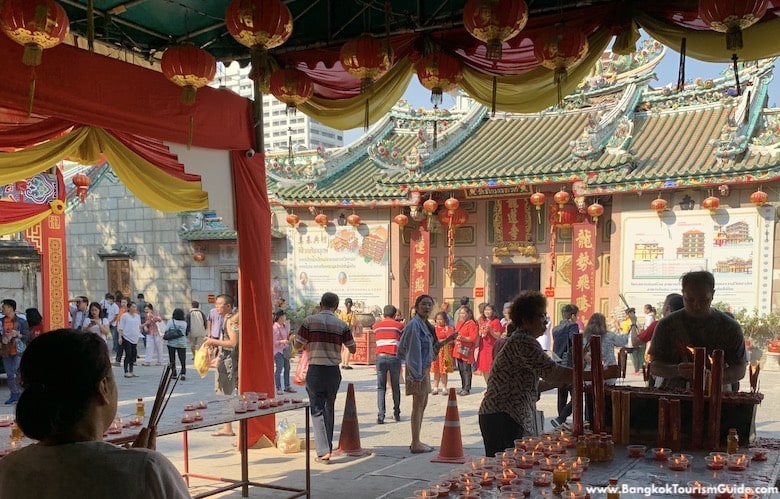
The largest Chinese temple in the city is filled with smoke, as devotees burn incense and paper money as offerings to ancestors. It’s worth visiting for the atmosphere and the decorative details, and a must during the Chinese New Year celebrations or the vegetarian festival in October.
See the Wat Mangkon Kamalawat Visitor's Guide.
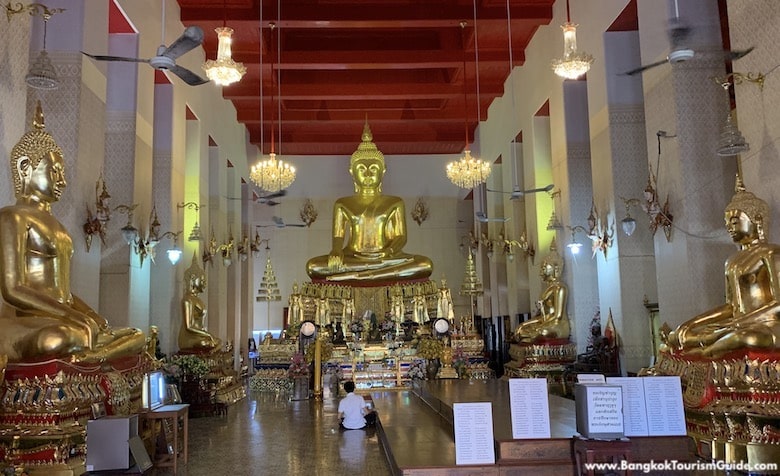
This is the quietest and least visited of Bangkok’s major temples, but is nonetheless one of the most religiously significant. It dates from the 1700s, and although its architecture isn’t as striking as that of other historic wats, it was once used for royal ceremonies. It continues to be home to a university founded in 1887, which is Thailand’s oldest for Buddhist monks (it welcomes visitors). Across the street is the amulet market, with stalls specializing in medallions and figurines to attract divine protection, good health and blessings.
Opening hours: 7am-8pm
Admission: Free
How to get to Wat Mahatat: Take the Chao Phraya Express boat to the Tha Chang pier.
Other Major Temples in Bangkok
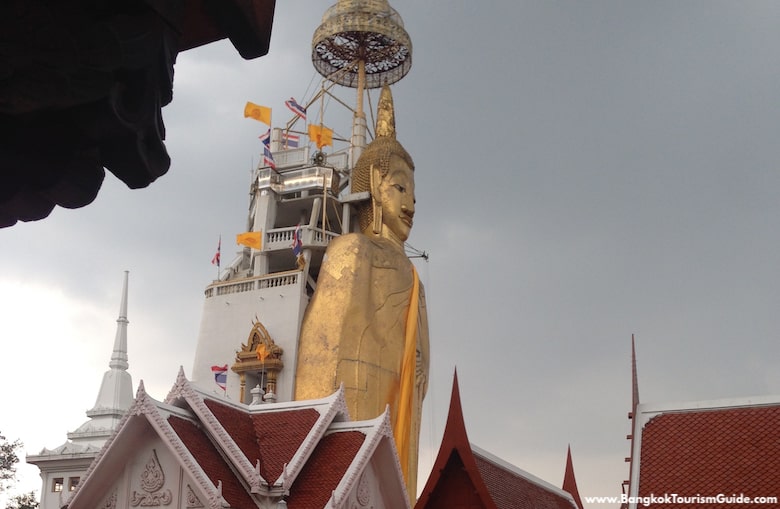
Wat Indharavihan
A 32m- (105ft-) high standing Buddha welcomes you to this temple, whose name is often shortened to Wat In (its full name is usually spelled in different ways -- Wat Indharavihan, Wat Intharawihan or Wat Intharavihan). Commissioned by King Rama IV in the mid-1800s, the statue enshrines a relic of the Buddha brought from Sri Lanka. The gigantic toes serve as an altar, so they’re usually covered in garlands of flowers and other offerings.
Very few tourists visit this temple, as it’s off the main tourist trail, but it’s worth a look for the statue and the traditional-style murals inside. During a visit, you’ll see locals getting their “lucky water,” sold in plastic bags.
Opening hours: 8:30am-8pm
Admission: Free
How to get to Wat Indharavihan: Take the Chao Phraya Express boat to the Rama VIII Bridge pier.
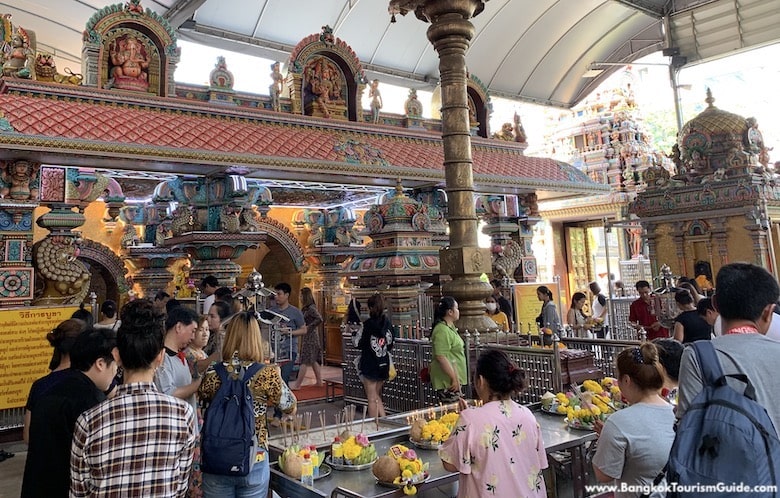
Sri Maha Mariamman
Bangkok’s most colorful temple was built for the Hindu community in 1879, but now attracts people of all faiths and those with no faith at all. It’s decorated with carved images of gods and goddesses, and follows a southern Indian style.
See the Sri Maha Mariamman Visitor's Guide.
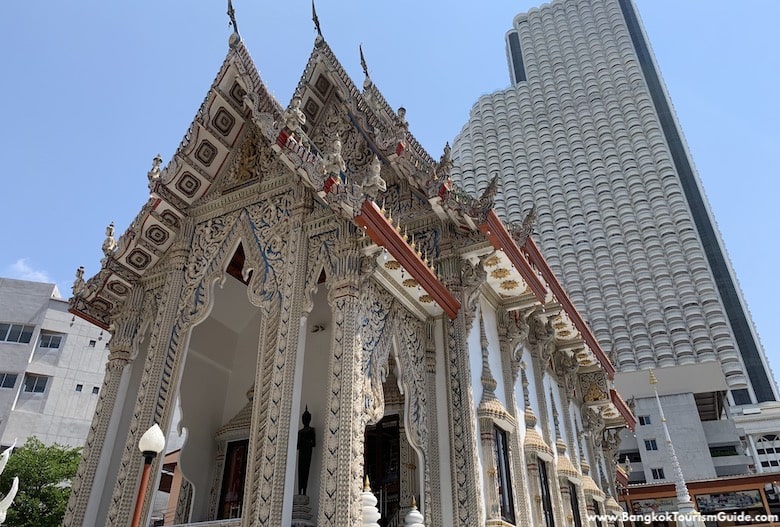
Wat Suan Plu
Usually overlooked by guidebooks, this temple is worth a detour if you’re staying anywhere near the Shangri-la Hotel or at the Lebua. Almost entirely made of wood, it’s a unique community temple with a school. Its decorative details also stand out in the city, as it mostly uses blue tiles and less golden tones. It was the first temple in Thailand to open its doors to tourists, so you’re free to enter and look around. You'll find it on Soi Charoen Krung 42/1, just a short walk from the Sathorn pier and the Saphan Taksin station of the BTS Skytrain.
Admission: Free
